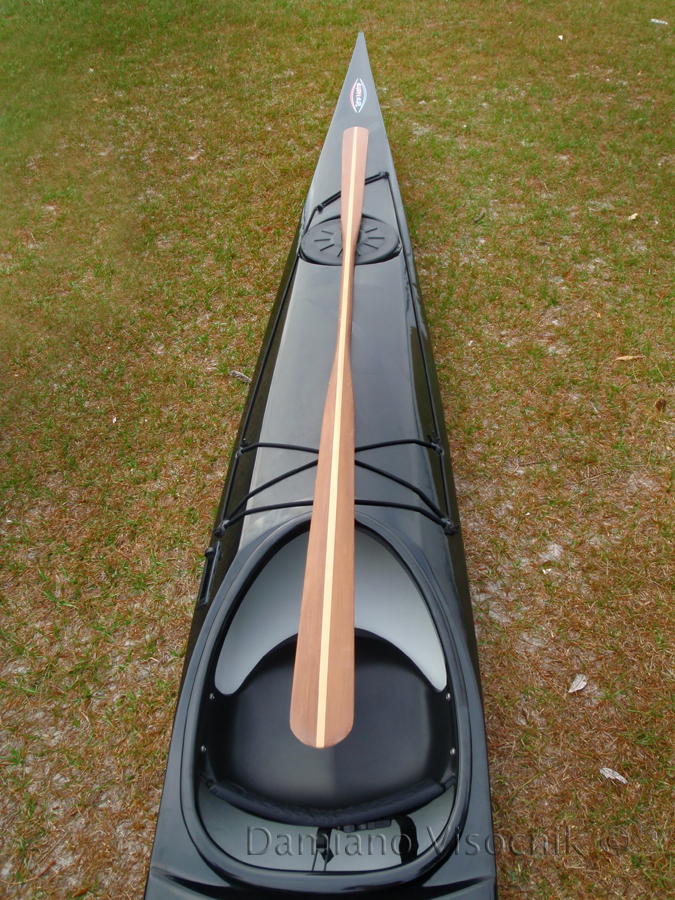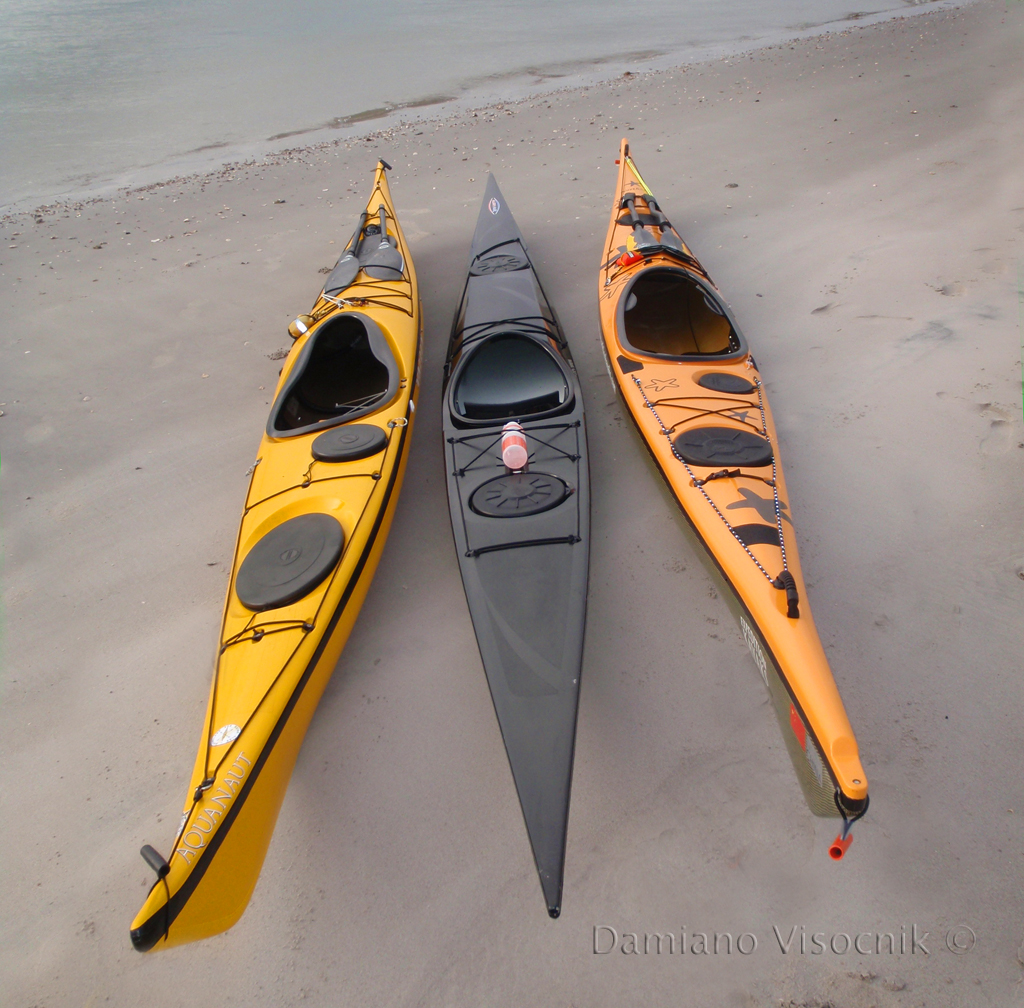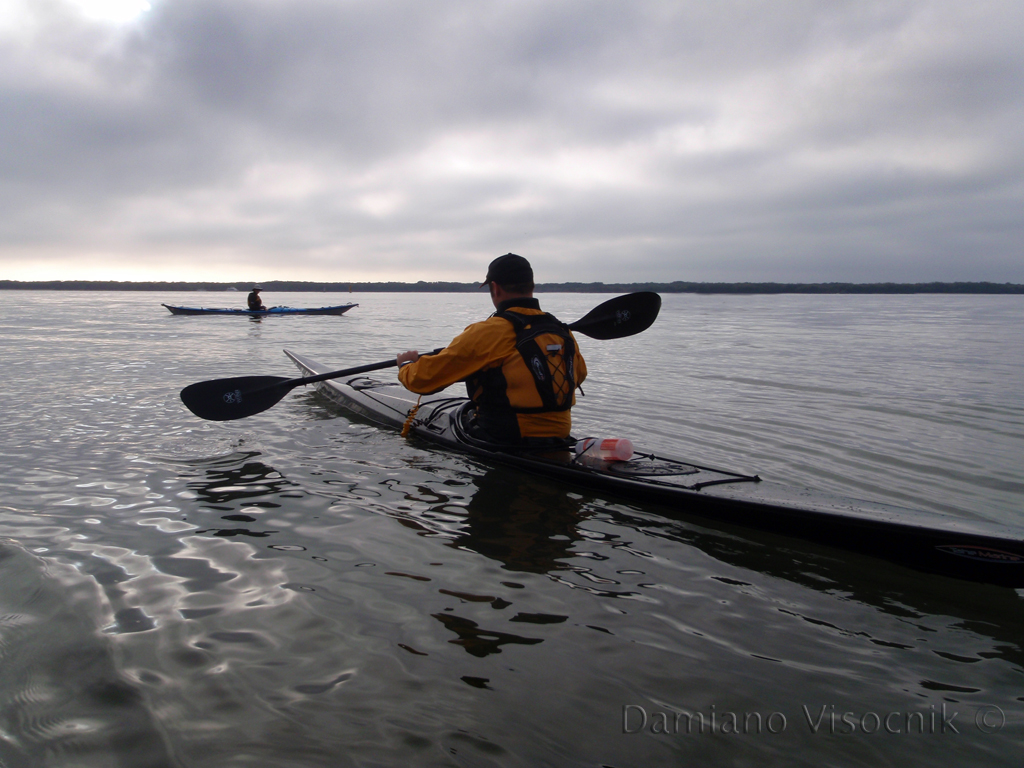The proud owner Brian Towell is ecstatic about it.

chick magnet, the kayak, I mean :-)
I am not a car man but I got to say that this combo (sports ute and that black "needle" on the rack) is positively a poser look (not saying that Brian is one, quite the opposite)
.jpg)

deck (paddle by Elverpaddles.com)
The finish on the gel coat is impeccable (hard to pull off a perfect finish on a black boat).
The external seam between deck and hull is a tiny 1/4" (not sure if there is any fibreglass tape there) but the interior one seems solid. All of the inside of the boat is painted to prevent any possible fibreglass splintering.
The seat is rather minimalist but offers a great shape and support for the medium size butt (arbitrary measurement :-)
.jpg)
how's this for low volume! can't even fit a six pack :-)
.jpg)
maybe size 11 (US) with thin booties?
I would raise the pegs to have the ball of my feet resting, not my heels..
The Greenland is a low volume boat, seriously low.,
Laybacks in that kayak are done without too much curving of the spine and full contact on deck is possible.
Needles to say that a kayak with such low rear coaming won't have a lot of freeboard.
Brian is not a big guy and there was only centimeters left between the deck and the water.
Any edging of the boat would flood a cockpit if there was no skirt, but who would paddle a kayak like this without one.
Speaking of skirts only a "miniskirt" is required (ocean style cockpits).

size comparison: VCP Aquanaut, Tahe Greenland, SeaBird Northsea
When compared in size to a British style kayak, the Greenland was dwarfed.
There is not a lot of room in that kayak.
Unless you are willing to go "commando" a camping trip is out of question :-)

Freeboard is low. Wearing that skirt is essential.
The kayak glides effortlessly on calm water creating very little turbulence.
.jpg)
Interestingly enough the Greenland is not just at home in calm waters.
Brian had great fun playing in the tidal flow next to a rock wall.
He said that attention is needed when edging because the kayak is not very forgiving with it's hard chined hull: a little edge means a sharp response.
There was a brief surfing session in 3-4' rolling waves that were braking.
While not exactly a surfing kayak the Greenland was still OK in the waves and Brian did not complain that boat broaching any more then his Aquanaut.
Tess Dodd also had a go rolling the Greenland.
It looked effortless.
Anybody that tried the kayak that morning said that it is a dream roller.
The ocean cockpit offers great contact with the thighs/legs and the very low volume kayak is easily rolled.
Laybacks are for once realistic without hurting your back.

Tess skulling the Greenland
Tess rolling the Greenland
The Tahe Marine is not a "one kayak does it all" kind of boat but more likely an addition to a quiver unless your only game on the water is rolling.
PS Silvio Testa's impression here
PPS MAY10: improved skills on the second test paddle here

.jpg)
+.jpg)

.jpg)
.jpg)
.jpg)
.jpg)
.jpg)
.jpg)

